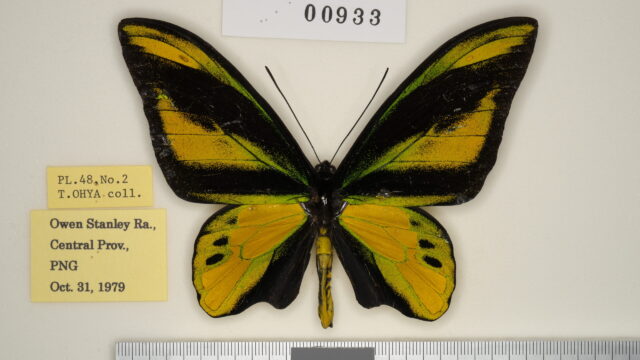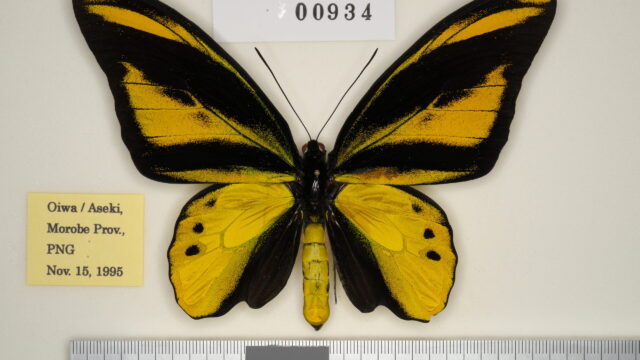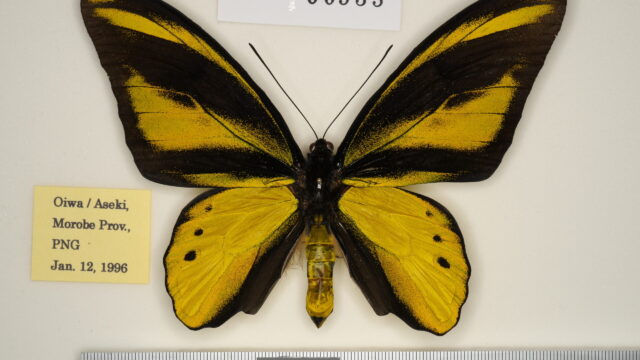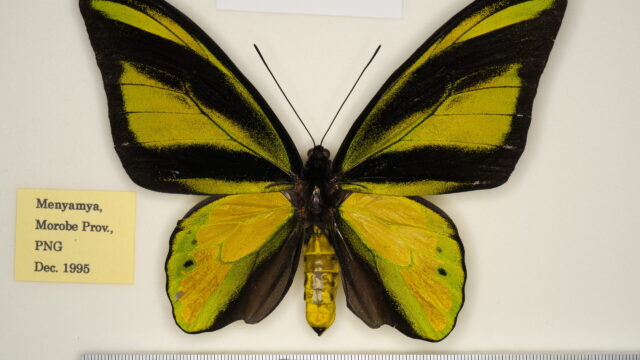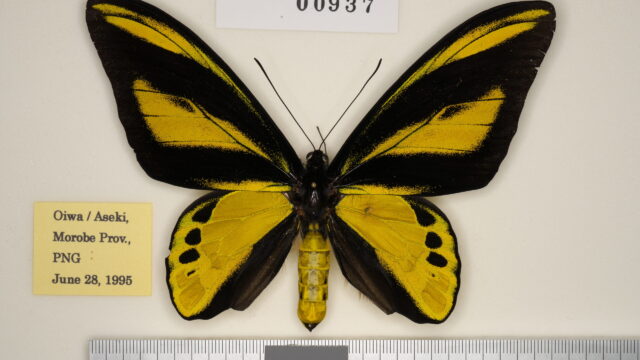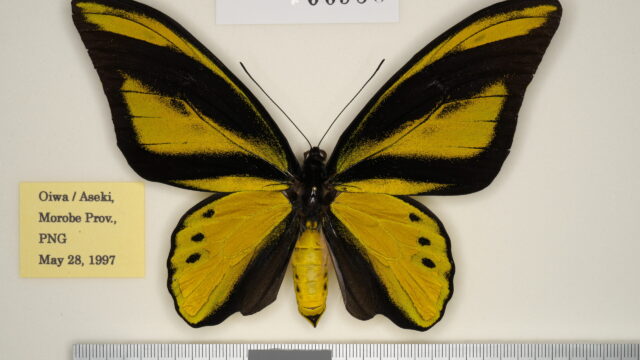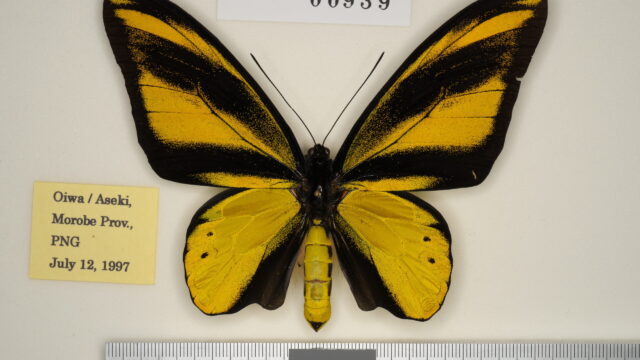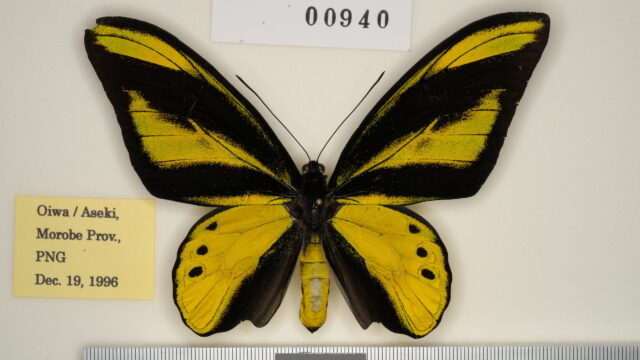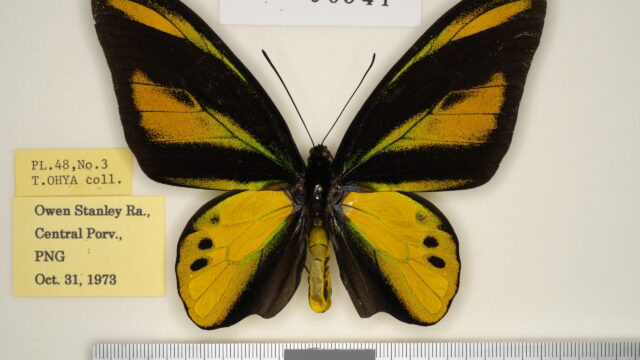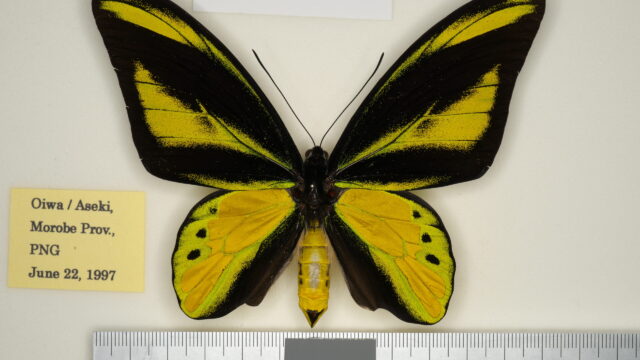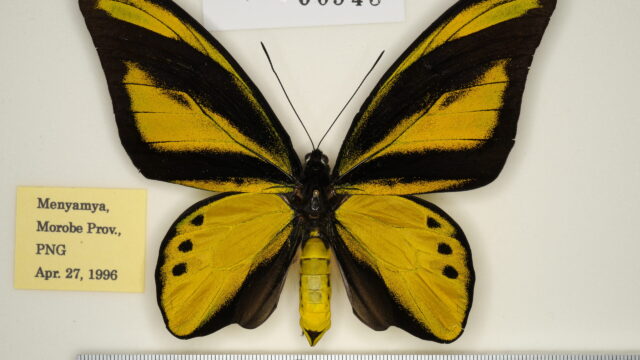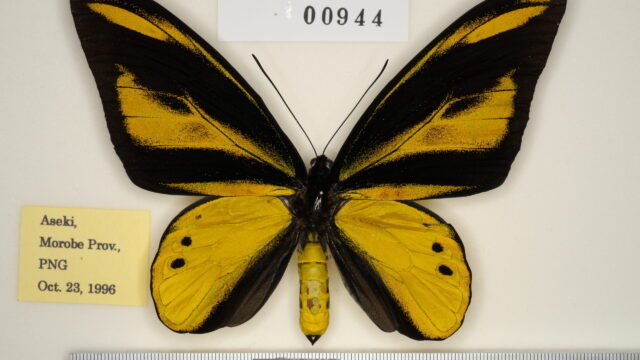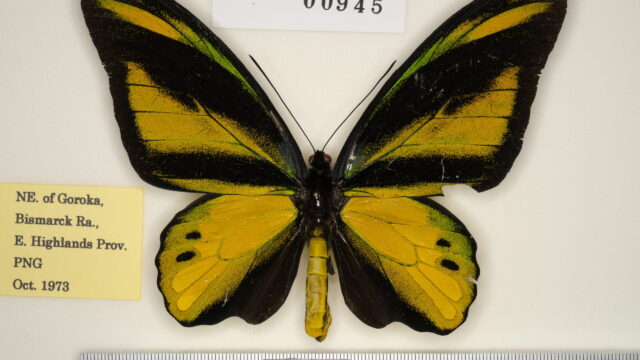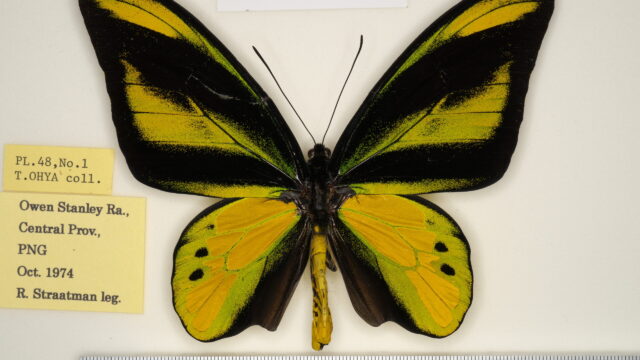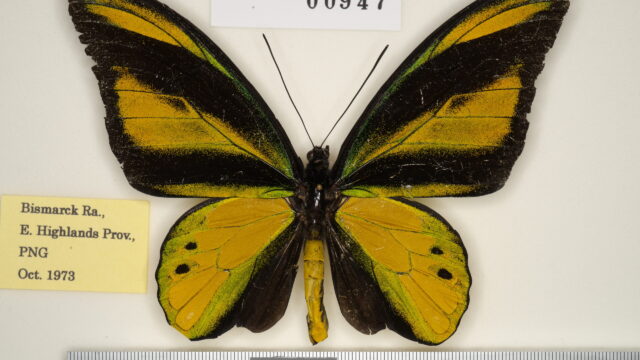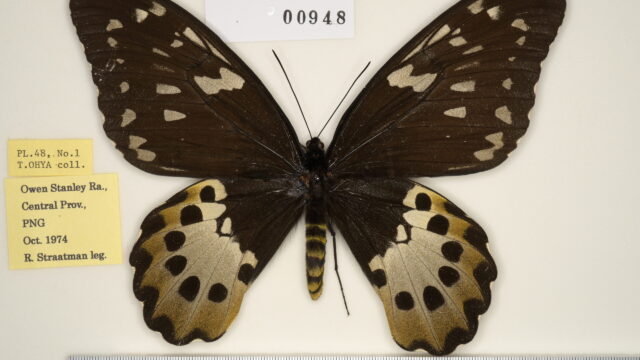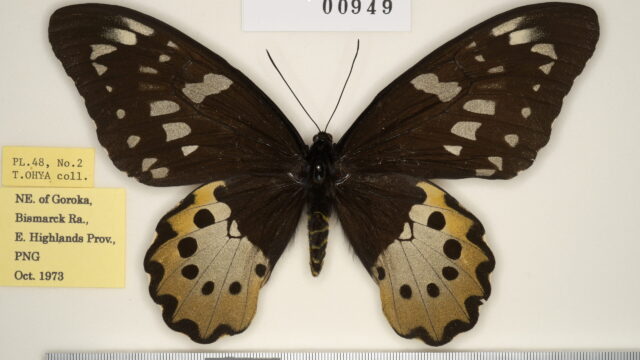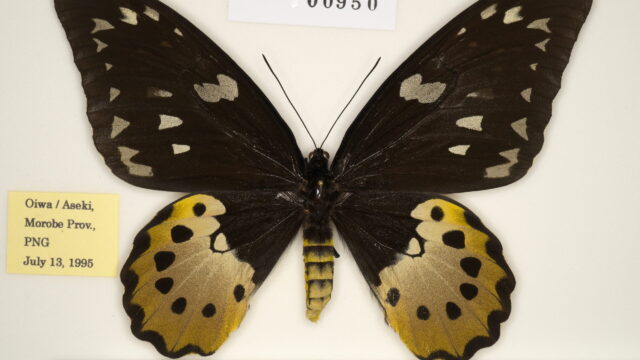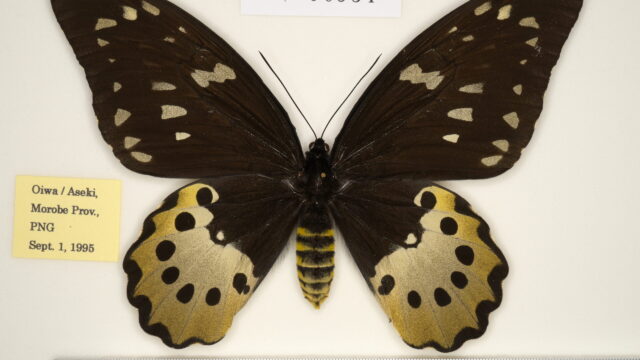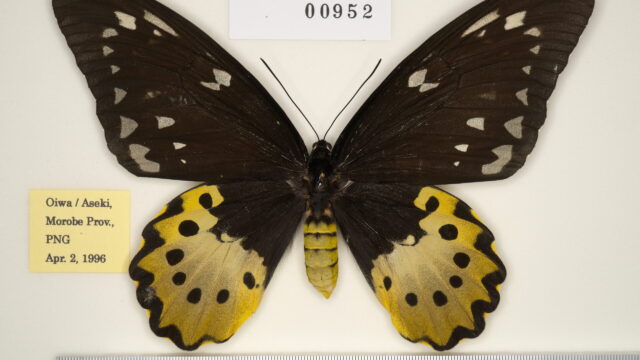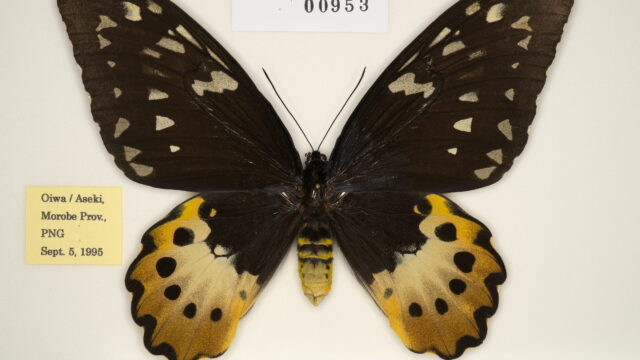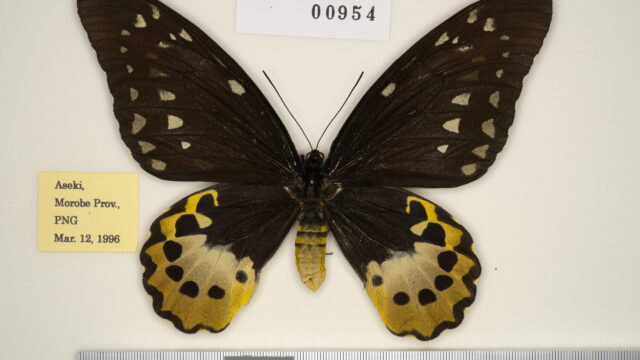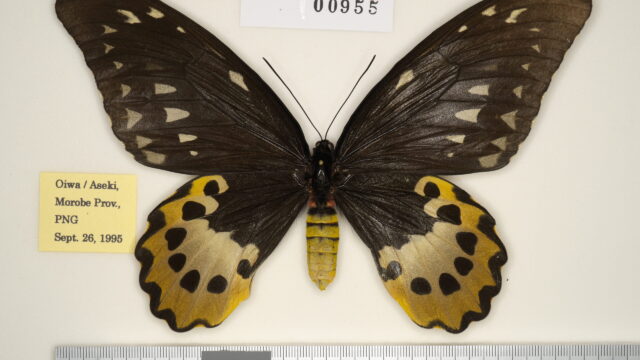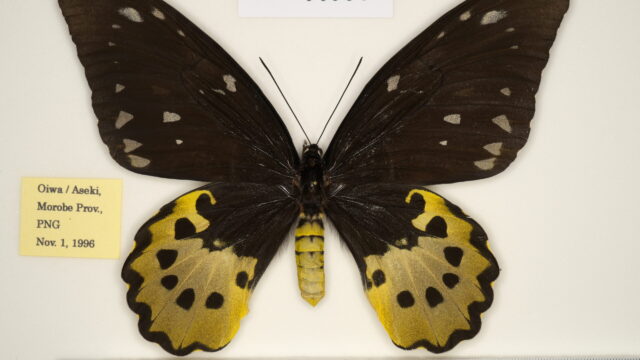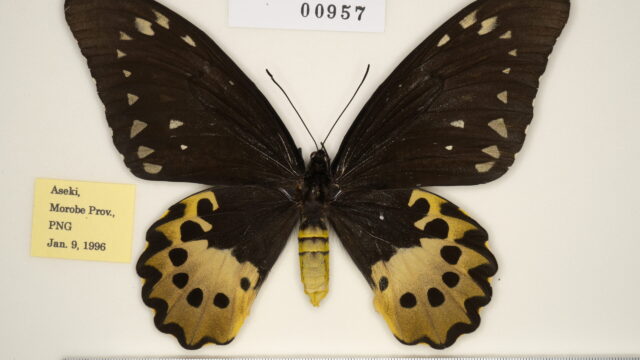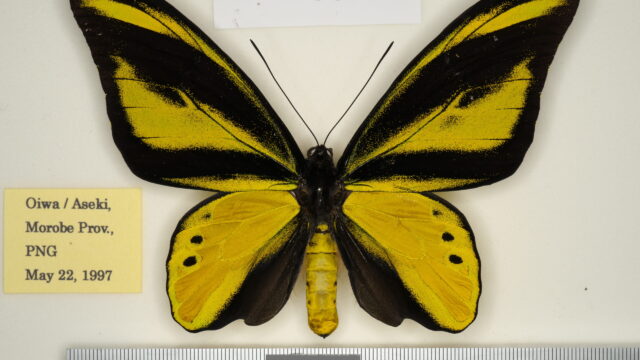1. Ssp. chimaera (Rothschild, 1904)11) [♀] [♂: (Rothschild & Jordan, 1905)13)]
(Distribution) [Map 48]
INDONESIA [Irian Jaya] Jayapura; PNG [WSP] Telefomin, [EP] Porgera, Laiagam, [SHP] Mendi, Ialibu, [ChP] Kerawagi, Yanderra, [MgP] Bundi-Bundikara, [EHP] Goroka, Mt. Otto (Kabebe), Mt. Gahavisuka, [MoP] Menyamya, Gumi, Oiwa, Aseki, Mt. Sam Sam, Bulolo, Wau, Mt. Kaindi, Waria River basin, [CeP] Angabunga River basin (Tapini), Owen Stanley Range (Woitape), Upper Aroa River basin (Owgarra), Hydrographers Range.
(Episodes of discovery and original description)
The specimen (1♀) on which Rothschild’s (1904) original description was based was collected by Meek at Owgarra, north of the upper Aroa River, by a native on the last day of May 1903. The ♂ specimen was described by Rothschild and Jordan (1905) from 3♂♂7♀♀ collected by Meek at an elevation of 6000 feet along the Angabunga River, a branch of the St. Joseph River, between November 1904 and February 1905. Chimaera is the name of a fire-breathing monster with the head of a lion, body of a goat, and tail of a snake (Greek mythology).
Here is how Meek collected his first ♂ O. chimaera. “I captured the male of the new Ornithoptera chimaera at last. It was a most beautiful insect, all black and gold; with three long stripes on the forewing, hindwing semi-transparent and gold, and inclined to be tailed. It was as large as the female common Ornithoptera and very broad across forewing. I felt more pleased than if I had been left a fortune when the male specimen came in, and I astonished the successful boy with the amount of largesse he got. he had two shillings – he knew the value of English currency – two tins of English bacon and five sticks of tacacco. A fine discovery of that sort stirs the heart of a collector. He forgets hardships and troubles, and remembers only that he has given something to science, taken from Nature one more of her secrets. “A little secret!” some may say, but naturalists do not think so. (A Naturalist in Cannibal Land. p. 142, 1913).”
(Characteristics)
This nominotypical subspecies is restricted to the mountainous area of Papua and is larger and has a wider wingspan than ssp. charybdis.
(Spotted pattern)
♂: Three iridescent green bands on FW and semi-translucent golden spot on HW are smaller than those of ssp. charibdis, except for new f. loc. dracaena, giving a darker impression overall.
♀: HW pale band is gray and turns to ochre or brown with darker black scales on the outside area from dark discal spots.
(Variatition)
♂-f. aureosedulum Deslisle, 20042): [Aberrant FW pattern] Presence of one or two semi-translucent golden streaks within subapical area of the radial band.
♂-f. confluenta Haugum & Low, 19795): [Aberrant FW pattern] (➡charybdis )
♂-f. dioni Deslisle & Sclavo, 20083): [Aberrant FW pattern] (➡charybdis )
♂-f. aurata Rousseau-Decelle, 193514): [FW/HW discoloration] Golden iridescent color instead of the usual green.
♂-f. sanguismaculata Deslisle & Sclavo, 20154): [FW discoloration] Presence of red patch subapically within the radial band, prolonged distally in the cubital band.
♂-f. manguini Deslisle & Sclavo, 20154): [FW/HW discoloration] (➡charybdis )
♀-f. excellens Haugum & Low, 19795): [FW/HW discoloration] All white or whitish scaling replaced by a light warm yellow color.
♀-f. herminea Rousseau-Decelle, 193514): [HW/Abdomen discoloration] Complete absence of yellow color on HW pale band, as well as abdominal pale ring.
